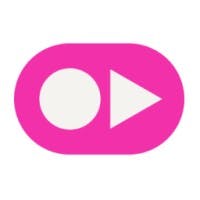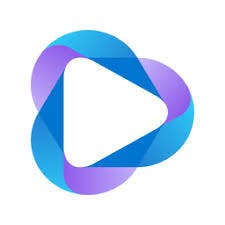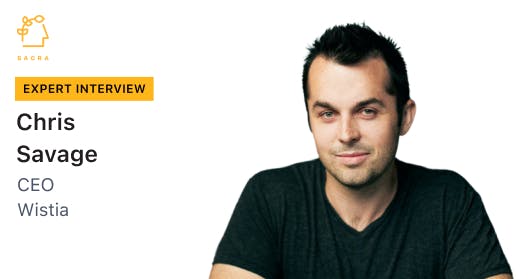
Background
Shanna Leonardi is content marketing manager at EditShare. We talked to Shanna to get a better understanding of how marketers set up webinars, how they think about post-webinar engagement, and comparative differences between webinar tools like YouTube, Zoom, and Wistia.
Questions
- Tell us a bit about EditShare. What is the part of EditShare you spend the most time on?
- How long has EditShare been using Wistia or Shift Media before that?
- Zoom is a product with a ton of penetration. In fact, some people have extra licenses and a pretty large relationship with Zoom. Yet there’s an argument to be made for why Wistia Live is a good product. How much of that, do you think, played a role in deciding to go with Zoom?
- How do you think about the performance on Zoom? Is it pretty good in terms of quality of the stream with no glitches and outages?
- How often do you do webinars? How do you think about how it fits into your overall marketing tactics and strategy—Is it a lead generation thing? Is it a lead nurturing thing? Do you see it as being top of funnel?
- Do you do snippets?
- How do you get the word out about webinars when you do have them?
- How do you define new leads? If you have peoples’ emails, they're known to you already but they may have had no engagement with your company at all. Are they considered a new lead once they go to the webinar?
- Can you tell us about the post-event engagement? What is the ratio between the amount of engagement on a webinar after it's repurposed across all these channels after the event vs. the actual live engagement?
- Sounds like marketing automation integration is really important here. How smoothly and seamlessly will X tool integrate with HubSpot in terms of your marketing stack? Also, what would be the trigger for you or your team to consider replacing Zoom?
- What is your general impression on webinars? Are they effective? How does it fit into your overall tool set for marketing?
- In terms of “simulive,”—we found that a lot of Wistia customers and in general, fake a webinar because it takes a lot of the pressure off, makes it easier in terms of scheduling—Have you considered that tactic or have thoughts about it?
- Any other marketing tech you all use that you really like and that you try to use as much as possible?
- Who makes the buying decision ultimately at the new company? What is the head of marketing most focused on?
- What KPIs do you track the most? What are your North Star metrics?
Interview
We were on Shift and then, Shift Media. We just switched to EditShare. We have used Wistia for a very long time, mostly for our product support videos on our website. Previously, we have used it to put things on YouTube, doing different series and stuff like that.
As we've changed branding and merged with another company, EditShare, three months ago, we have another rebrand situation going on. So, we've used it a lot just to host our videos so that they look uniform and professional, no matter what’s viewed.
We did look at using it for webinars, last year. We did two or three of them and it was good although it was just very basic. So, we ended up going to Zoom to do them and since then, we have been using Zoom for that.
Though I've been with the company just over a year, before I was here, I want to say at least three years, because just looking at what's archived there, it's quite a bit of stuff.
I know, anytime we've talked about switching anything or moving anything, the customer success team has been like, "Don't touch my videos or I will..." But we really don't have any reason to switch. Right now, the marketing team is four people. I'm in marketing and do content management. Since it's a small team, we all overlap and do different things.
In fact, customer success uses this a lot. Product works in conjunction with them to create the product videos. Then, marketing uses it for various things. I think our sales team, at one point, also used it. You guys had something called Soapbox for a little while. I don't know if that still exists.
It was recording your screen and you at the same time so it could come together, which was good for the sales team. However, now, the sales team has changed but when I first started trying to get them to use it, they were not great at doing things like that, themselves. They needed a lot of handholding, so unfortunately, it didn't come through.
I was looking into it recently though, because some people were asking about it, so I'm not sure if that's something that still exists. We used it for a little bit, and then, I started using it for, like I said, webinars for a little while. Then, I started using it to host videos to then put on the blog. The first one was about a year ago. We already had a Zoom webinar license so that's what we ended up going with.
Zoom is a product with a ton of penetration. In fact, some people have extra licenses and a pretty large relationship with Zoom. Yet there’s an argument to be made for why Wistia Live is a good product. How much of that, do you think, played a role in deciding to go with Zoom?
The issue, on our side, is that when we created a Wistia, I guess you call it Live and not webinar, so apologies. But when we created Wistia Live, we had to create all the branding and stuff around it for HubSpot and then, embed the link into HubSpot. There was a lot of HubSpot stuff we had to do to create a form and then, put them in a sequence for emails and all of that, where Zoom did all of that automatically.
I was able to enter all the branding into Zoom, and then, I did not have to go to the web dev team to say, "Hey! I need this set up in HubSpot to create all of this stuff." That was one thing.
The person at the time that who was hosting the webinars would do all of the interviews and screen shares and stuff like that. He's actually no longer with us, so I can't ask for specifics, but I know that he had to do more work on the backend of how to share this screen to where it looks this way, and then, stop and the guest shares the screen. It was the transition of that, going back and forth, I think, that was tricky for him. He did do a lot of technical stuff because he was a video editor, so I don't know what that played into. But that was tricky for him. I would hang out on the backend to answer questions and stuff, but I would be off-camera.
That's it. I honestly don't remember but I can tell you how I used Zoom, though I can't remember if Wistia Live does this. In Zoom, because I am not an on-camera person but a behind-the-scenes person, I set up the Zoom on my Zoom account. Once everything is set up, I can transfer the host duties to somebody else, which is nice.
The one good thing, I feel Wistia Live had was, you could bring people on and off stage, or on- and off-camera. That was a nice feature that I don't think Zoom does, that I know of.
Also, Zoom allows a backstage conversation to happen, and then, they allow direct messages to the people from the audience that nobody else sees. They have a live comments section so that people could have some anonymity if they wanted. That was a good feature.
The other thing is quizzes. At one point, it was like polls and quizzes and stuff like that on Zoom. We were using that on some of them.
How do you think about the performance on Zoom? Is it pretty good in terms of quality of the stream with no glitches and outages?
Luckily, I've never had that problem, knock on wood. However, I have an issue with Google—Google Meets, for example. I cannot have my camera on because it just glitches like crazy and drops out. It happened to me this morning.
How often do you do webinars? How do you think about how it fits into your overall marketing tactics and strategy—Is it a lead generation thing? Is it a lead nurturing thing? Do you see it as being top of funnel?
We've had a lot of changes with the merger and the rebrand and everything, but ideally we would do one a month. It would be top of funnel, mostly. It's more just, "Look at our bells and buttons and get an interest in it. Ask a question." Then, we can use that.
When we use it, I download it from Zoom and put it in Wistia to send out. I don't send it from Zoom because they don't have a whole lot of options with views. You can either see the speaker change or you can have it on one speaker—there's not a lot of options there when it comes to what displays. We'll take the recording, put it on the blog. Sometimes, we'll send the link from Wistia once it's uploaded. Just put it in an email and embed it that way.
Do you do snippets?
Sometimes yes, I do. I used to do snippets a lot when the webinars got really long and then, just have a folder with everything broken up in there that I could then embed in HubSpot. I haven't done that recently, I will say, because video editing is time-consuming. To be honest, that's how we've used it.
We haven't used it really for middle funnel at all, and that's partially just where we're at as a company of being a new team, figuring things out, going through the virtual like start, stop, start, stop. We have not really tried that, but I will definitely take that tip.
How do you get the word out about webinars when you do have them?
We put them on social, and then we have a campaign that will go out. Zoom will have a link to the page that then automatically adds it to your calendar.
When we're advertising it, we put that link on social, and then we also put it in an email nurture, newsletters, and on the blog or the website as a little call to action. Then Zoom handles the email nurtures once the person is registered.
It sends all of the reminders of, and you can customize those, so it'll be like, "Oh! You're one week out. You're one day out. You're one hour out. It's happening now." We set that up. Once they sign up, we do the marketing part, but then, Zoom handles the rest of the sequence.
In addition, we use our email lists, which is a lot of them and have channel partners that send it out, too.
How do you define new leads? If you have peoples’ emails, they're known to you already but they may have had no engagement with your company at all. Are they considered a new lead once they go to the webinar?
This is not my area of expertise but I will say it has something to do with where they're at in the cycle. It bumps them back to “new lead.” They have to have so many touches, and then if they're not active, then they fall back into the most basic new lead nurture sequence.
Can you tell us about the post-event engagement? What is the ratio between the amount of engagement on a webinar after it's repurposed across all these channels after the event vs. the actual live engagement?
I would say it’s probably ten to one. We get a lot of people that watch after the fact. We don't get a lot that watch live. We have a lot of people sign up, and then we typically will send that out to them too. If you register, you get the recording. But yes, I think it's hard to get in front of people for alignment, sadly.
In terms of ranges of attendees or sign ups, it's totally random. I would say the product-focused ones are more well-attended than the ones that are industry-focused. But the product ones, especially if it's a new product, brings 80, 90 people signing up for it and then maybe 30% of those people actually show up.
Then once we put it on the blog, they get an email, "Hey! We have a new blog post." We put it on social and then we get more people that will go back and watch it. We also put a form on the videos in Wistia through HubSpot so that they can watch the first minute or the first five minutes or whatever, and then they have to fill in the form in order to continue watching, which is helpful.
Sounds like marketing automation integration is really important here. How smoothly and seamlessly will X tool integrate with HubSpot in terms of your marketing stack? Also, what would be the trigger for you or your team to consider replacing Zoom?
HubSpot is top of the list for us.
To your next question, that's a really hard one because Zoom is paid for already. So I would have to have a very good case to get my company to pay for something that we already technically pay for. That's very interesting. I'm not sure. I think it would be either something having to do with screen share on the backend or... I don't know.
What is your general impression on webinars? Are they effective? How does it fit into your overall tool set for marketing?
It's funny because I have this conversation all the time, actually. My boss wants us to do a webinar a week and I'm like, "Nobody has time for that. Nobody's watching this. What are you doing?"
I think, having a webinar just to have a webinar is a waste of time. We've definitely been guilty of that—"Oh, well! It's the last Wednesday of the month. Time to have a webinar."—I think, content definitely matters.
The other thing I would say that is really helpful—which I haven't really done but you can do it in Wistia and you can't do it in Zoom—is add chapter markers, because so many people watch it after the fact.
I do this often and it's like I go back and I just look at the relevant parts to me, because I don't really have an hour during my workday to sit and listen to a webinar unless it's about something that's vital to my job. So, I have to say that. However, I do think it is important, especially for how to or to drive engagement.
Or, we have a software product. A lot of the time it's the only time people are really looking into our product unless they do a demo or reach out. It's an easy way to show off our product, which is also pretty important.
In terms of “simulive,”—we found that a lot of Wistia customers and in general, fake a webinar because it takes a lot of the pressure off, makes it easier in terms of scheduling—Have you considered that tactic or have thoughts about it?
I mentioned before that the previous guy that was the host of the webinars was against it. He said it overcomplicated that situation for us and would be like, "It's dishonest.” But I'm like, "Most people are watching it recorded anyway."
Moving forward, especially now that we're a global company and we're always trying to get people—we have the West Coast and then, we have the U.K.—and it just doesn't work to do a live webinar with those people either. We're breaking up our team so I would absolutely, going forward, probably be doing that.
Any other marketing tech you all use that you really like and that you try to use as much as possible?
Just recently, I signed on with Storykit, which is a video creation site. I'm still learning but I really like that. We will be using that for sizzle reels and short videos, social media, stuff like that.
We also use Semrush, but that's SEO. There’s HubSpot and Sigma for a lot—all Adobe products. I feel like the platforms that would be of interest to you would come from my counterpart who does all of that but I know they've just started using Drift.
Who makes the buying decision ultimately at the new company? What is the head of marketing most focused on?
Ultimately, my boss, who is head of marketing, but everything has to go through the CFO. It's creating MQLs. Once they hit a certain marker to turn sales.
What KPIs do you track the most? What are your North Star metrics?
We've looked at a bunch of different ones over the years of who fills out the form, how many views you have, and what's the engagement on it. But really, what we're looking at going forward is not who signs up, not who watches it, but who reaches out afterwards. That's where we're going with that.
Disclaimers
This transcript is for information purposes only and does not constitute advice of any type or trade recommendation and should not form the basis of any investment decision. Sacra accepts no liability for the transcript or for any errors, omissions or inaccuracies in respect of it. The views of the experts expressed in the transcript are those of the experts and they are not endorsed by, nor do they represent the opinion of Sacra. Sacra reserves all copyright, intellectual property rights in the transcript. Any modification, copying, displaying, distributing, transmitting, publishing, licensing, creating derivative works from, or selling any transcript is strictly prohibited.

 Marcelo Ballvé
Marcelo Ballvé





